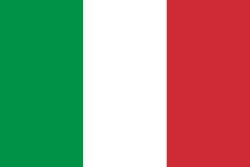| Italy at the 1960 Winter Olympics | |
|---|---|
 | |
| IOC code | ITA |
| NOC | Italian National Olympic Committee |
| Website | www |
| in Squaw Valley | |
| Competitors | 28 (21 men, 7 women) in 6 sports |
| Flag bearer | Bruno Alberti |
| Medals Ranked 14th |
|
| Winter Olympics appearances (overview) | |
Italy competed at the 1960 Winter Olympics in Squaw Valley, United States.